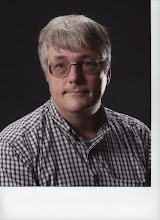The Calculus of Cousins
By Bobby Neal Winters
When I write a test, I type it out on a word-processor (it’s actually a text-editor, but that’s a different rabbit hole for a different day) and I save it on my computer. I put the different classes in different folders. Within each class’s folder, I make a new fold for each year and I name that using the date.
I am teaching Calculus II this year; it is my practice in Calculus to give the students a test every other Friday, so during the first week of class, I looked up my folder: The last time I’d taught the course was in 2003.
I told this to my students and asked them. Were any of you yet born in 2003? Raise your hands.
Nary a hand.
During the span of time since I last taught Calculus II, these students had come to term in their mothers wombs; they had learned how to walk, learned how to talk; gone to pre-school, to grade school, to middle school, to high school; they had learned to drive.
They had done all of this since I last cracked a Calculus textbook with intent to teach.
This should be fun, I thought.
And it has been. I spend a few odd hours during the day working on problems.
For those of you who teach Calculus, we are using Thomas’s 15 edition Calculus book. This is special to me because my cousin Gary gave me his 3rd edition of Thomas’s Calculus that he’d used in college in 1961, a year before I was born.
Gary was the first grandchild of Grandpa Sam and Grandma Lora. Lora was in her mid-thirties when he was born. Don’t do too much math here. I was Sam and Lora’s last grandchild, so Gary and I were bookends, as it were.
He gave me his copy of Thomas when I started working on the math major with the warning that there was a lot of “blood, sweat, and tears” in it.
In that he was right. There is a lot of all of that in learning any skill, and mathematics is a skill to be learned.
There was also a lot of coffee in it, for Gary, in particular. This I know because there are coffee stains throughout the book. If you drink coffee while studying it is axiomatic that you will spill some of that coffee on your book.
I love that about the book. I took it to class, and showed it to my students. It was printed in 1961 and copyrighted in 1951.
Gary would occasionally email me. He wrote his emails in all caps. This is because he spoke in all caps. I don’t mean to say he yelled. His words just carried a weight that required capitalization.
Gary was born in the oil field; served in the military; educated by the GI bill. He’d worked in aerospace engineering, and transitioned to having his own business of buying, fixing, and selling used airplane parts.
I can still hear him saying, “The people who sell to me are happy, because I give them money; the folks who buy from me are happy because they are getting the part cheaper than they could buy a new one; and I am happy because I am making money.”
Only when he said it, it would’ve come out of his mouth in all caps.
This strikes me as the best business philosophy ever. It makes me proud to have had him as a cousin and proud to be an American.
He helped me. He reached out to me. This was at a time when I was not in a position to help him, nor would he have needed my help.
This is a debt that is owed, and the answer to this is known: Pay it forward.
Fortunately, I am in a position where there is ample opportunity to help people, to help young people.
I am blessed because it is my job.
My business model is different. I don’t sell airplane parts; I sell knowledge.
I get to keep the knowledge that I sell. In fact, I know it better by virtue of having to teach it. While money does change hands at some level way above me, the real price they pay is the one my cousin said, “Blood, sweat, and tears.” Somebody might’ve said it before him.
Gary now sleeps with our fathers, as do more and more of Sam and Lora’s grandchildren.
The world is different. Textbooks are now online. I don’t like it. It’s unnatural. Try spilling coffee on the Cloud.
But it’s a new semester, and there is Calculus to be learned.
Bobby Winters, a native of Harden City, Oklahoma, blogs at redneckmath.blogspot.com and okieinexile.blogspot.com. He invites you to “like” the National Association of Lawn Mowers on Facebook. Search for him by name on YouTube.


